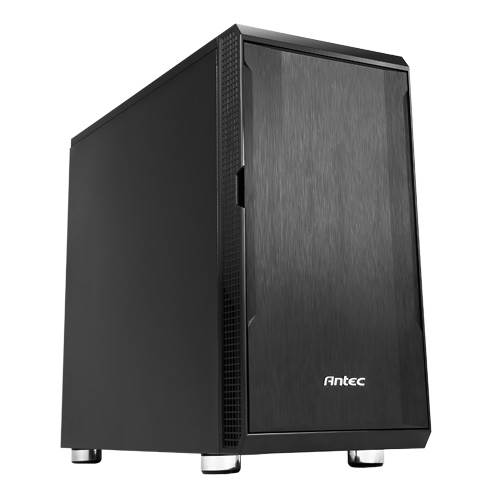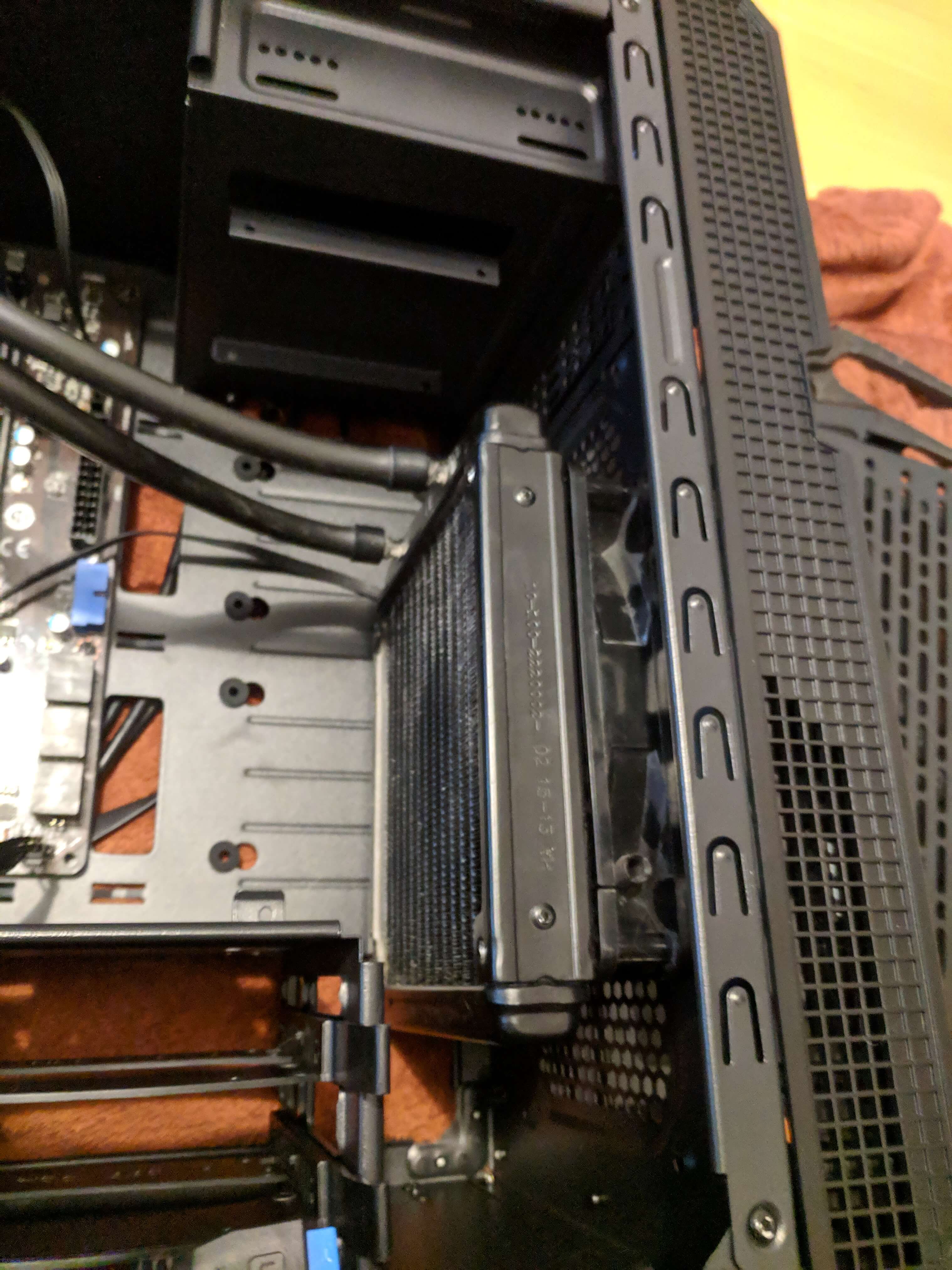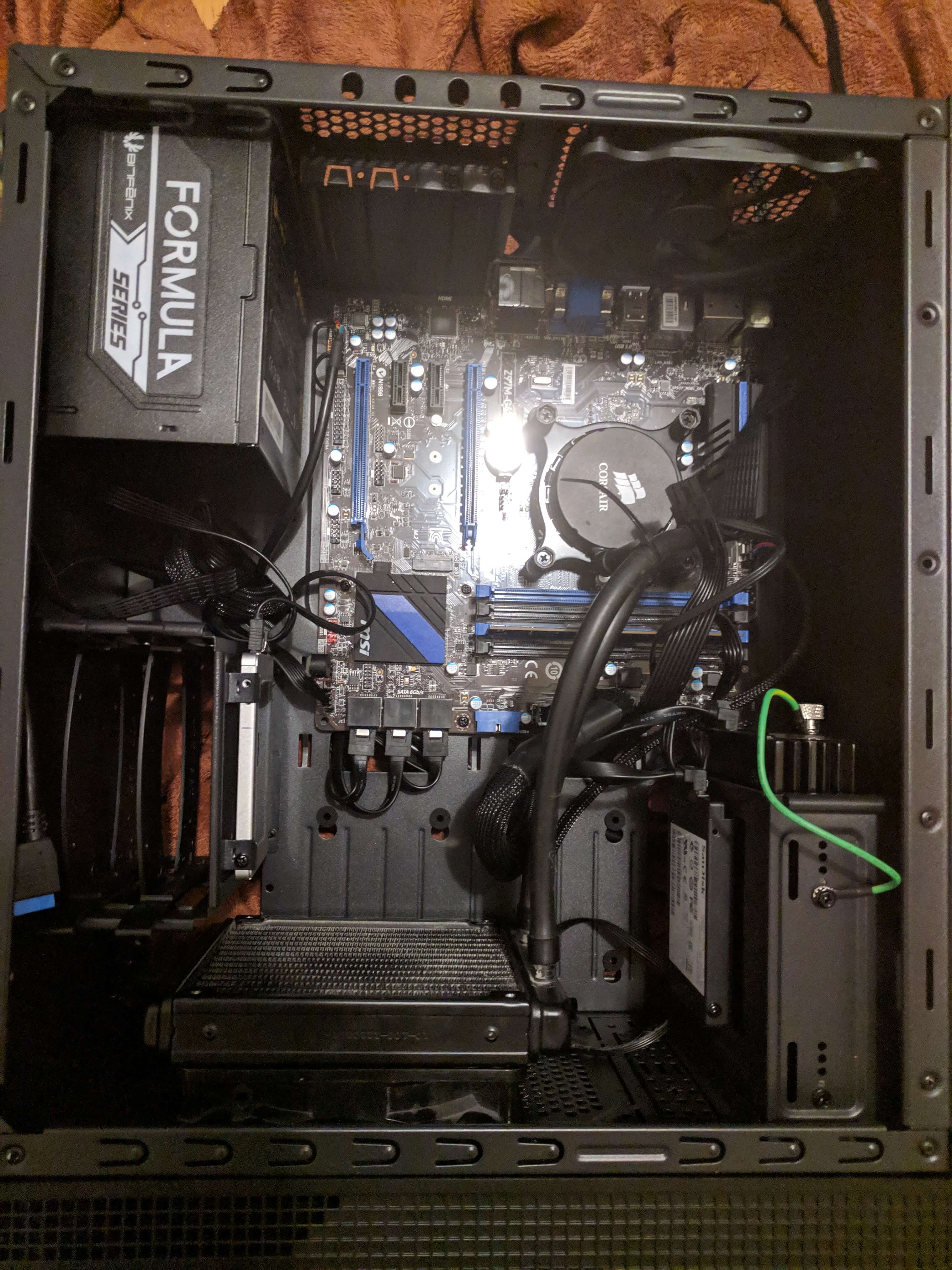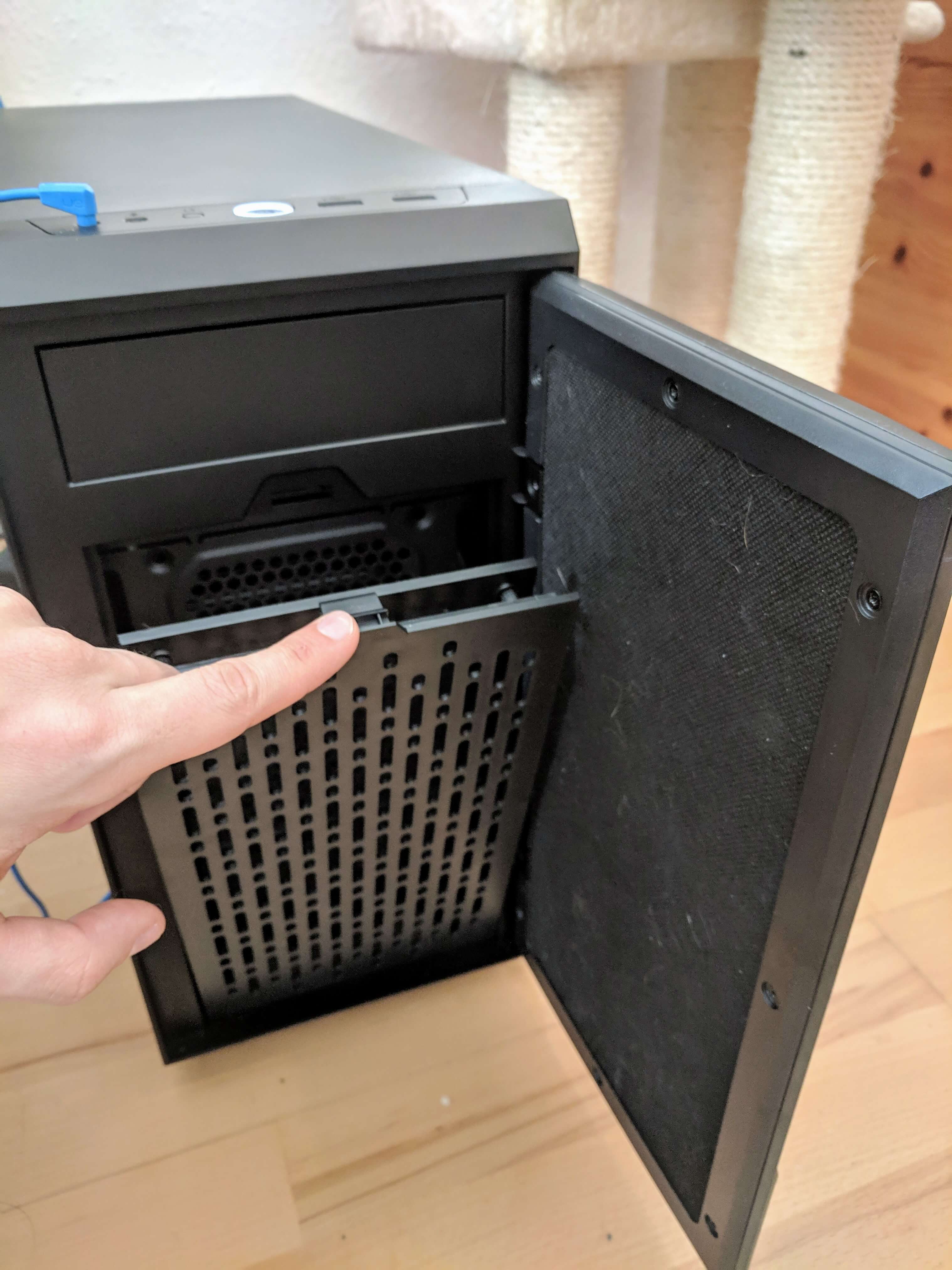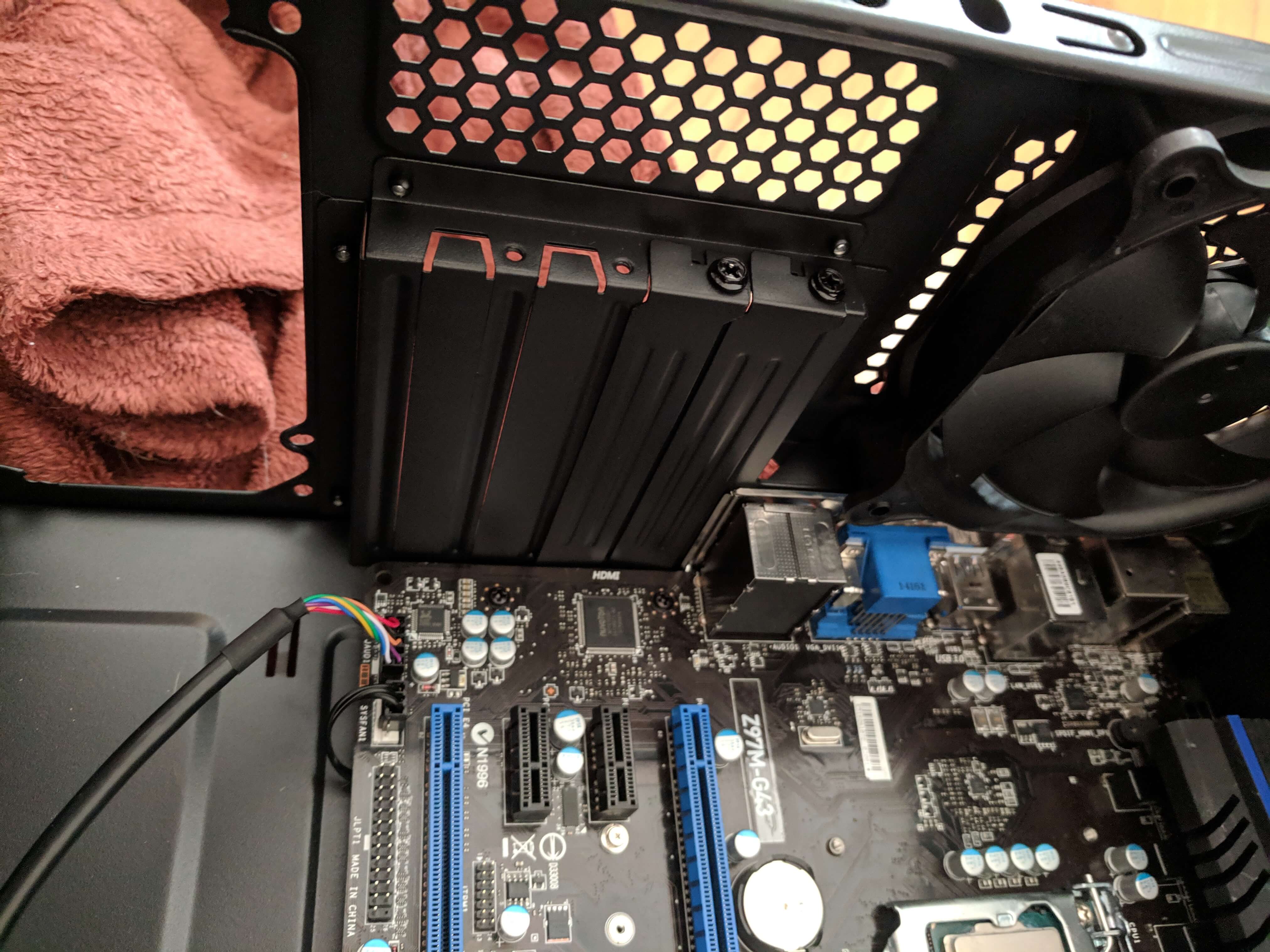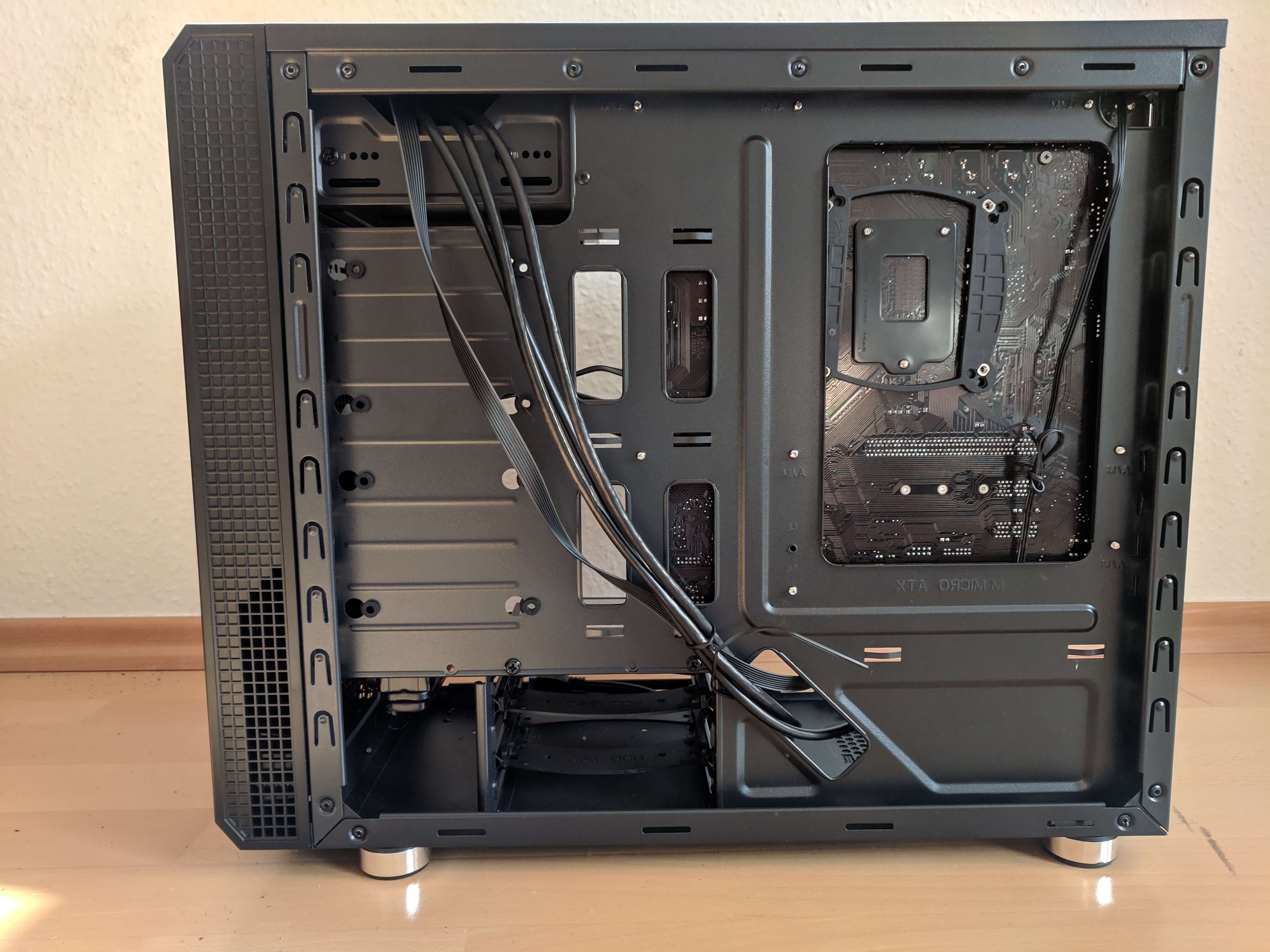Assume you need a new case for an mATX motherboard and you want a case specifically for that board size, not a regular mid tower. You have lots of options. But then you also want to use your old AIO with a 140mm radiator. Suddenly you only have a few options, but known good ones like the Fractal Design Meshify C Mini or the Fractal Design Define Mini C. But if you then also want a 5.25” slot — and be it for storing your HDD with a hard disk silencer and cooler like the Alpenföhn Alptunnel — then suddenly you are almost out of options. All the well reviewed cases fall away. One remaining choice and actually a nice case is the Antec P5 Mini, one I will review here today.
The main features
The Antec P5 Mini is a modern mATX case. With modern I mean the style and the layout: It has the slick black box style popular with the Fractal Design cases and an interior layout without a hard disk cage. The psu gets installed at the bottom with the fan being able to point down, there is a cut out (with dust filter) to let it pull in air. The power and the reset button sit at the top of the case, together with two USB slots and the audio output. Prominent is the white power LED encircling the power button, the other design element are the feet being metallic instead of black. Though the front is also not just black, it has some structure that makes it seem wood-like at first glance.
Thanks to not having a hdd cage it supports gpus with a length up to 360mm, the cpu cooler can be 155mm high.
Main differentiator to other mATX cases is the radiator support, while still having a 5.25” slot above. At the front there is space for two 120mm fans or even a 240mm radiator, with fan holes to install one 140mm fan with out without radiator instead. The small hard disk cage at the bottom is placed appropriately far away to let space for radiator and fans. The only other fan that can be installed is a 120mm fan at the back of the case.
The P5 Mini has noise isolation foam already installed. That noise isolation actually works, there is an audible difference for example when opening the hinged front panel. But the bitumen foam installed here seems to me less effective than the aftermarket noise isolation foam sold by the german vendor caseking I use in a different case. Still, it’s a nice addition and the P5 Mini is not noisy, I had no issues with vibrations and I can not hear the AIO pump or coil whine from psu or gpu when sitting next to it.
It helps that the two pre-installed fans are not bad. They are not great either and only have three pins, but they will work for you if silence is not the absolute top priority. If it is you want to install more expensive silent case fans instead.
Air flow was my big concern. After all it supports way less fans than the typical mid-ATX tower. To make matters worse, the air holes at the side of the front panel are mostly just decoration: Only the lower area is perforated completely, the upper part covered by plastic. This will help reduce the noise that can pass at the front, but it lowers air flow. Because of this I wouldn’t recommend running a 300W gpu and an overclocked Threadripper in this case, but for regular consumer hardware the thermal performance was surprisingly decent, with no overheating issues whatsoever.
It might be that the noise isolation foam helps here and its subjective, but the P5 feels sturdy. The way the side panels don’t flex too much, how the feet are installed, how the front panel moves and how well the mechanism to remove the front dust filter works: There is some quality here that makes me like the case. It’s also not flashy at all, there is no window and there are no RGB LEDs, characteristics I quite like. That the case is not a premium case is evident mainly because of its flaws we will cover now.
The Flaws
I already mentioned the fans not being PWM models, which would be a prerequisite for a higher price point (or the integration of a fan hub, like Phantek does). But also apart from that not everything is perfect: The dust filter at the front can easily be removed, the one at the bottom is less easy to reach. The two upper PCI-E slots are installed with a screw, as they should be, but the other two would have to be removed with force. Proper replacements come with the box, but they should be pre-installed. The power button at the top had two small flaws in the coating — not something you’d return the case for, but it should be mentioned here, as it point to quality control issues.
Two 3.5” HDDs fit into the hard disk cage, there are also two 2.5” slots at the motherboard side of the cage and two at the back side. That’s nice and that way it supports more disk most people will ever need. But the two SSDs at the back need to be screwed in, a toolless installation mechanism would have been nicer. At least the placement is good and there are rubber pads to make sure the bottom of the disks do not touch the cases directly. The placement aligns well with the cable management features the case possesses. It would be more comfortable though if the case was one cm wider, making it easier to store power supply cables at the back side to make proper use of the cable management cutouts in the mainboard tray.
Conclusion
The Antec P5 Mini is a good case. It has almost no competition if you want radiator support and a 5.25” slot in an mATX case, but even if you do not need that 5.25” slot the P5 Mini is a sound option, especially for the current price of ~50€. It looks nice, has a good layout and solid build quality, with only minor flaws like the PCI expansion slot covers and the two white spots in the coating of the power button (which might very well be specific to my model and not a common issue).
Part of the story here is that modern cases are just really good, even the basic OEM designs. As a buyer you mainly have to not buy a case with a really old layout, which is easy to spot: If the psu is at the top and the interior metallic, stay away. The modern standard instead features a lot of strengths: It supports long GPUs, intelligent HDD and SSD placement, cable management options and in general makes it easy to build in. The P5 Mini feels like a shrunk and partly improved version of that. It shares the strength of the modern default design, but also the flaws of the non-high-end price segment, including the design trend of the last ~2 years of closing the front; which looks nice and can minimize noise if it does not kill air flow completely. The P5 Mini seems to have succeeded in finding a valid compromise here. I’ll keep it.
